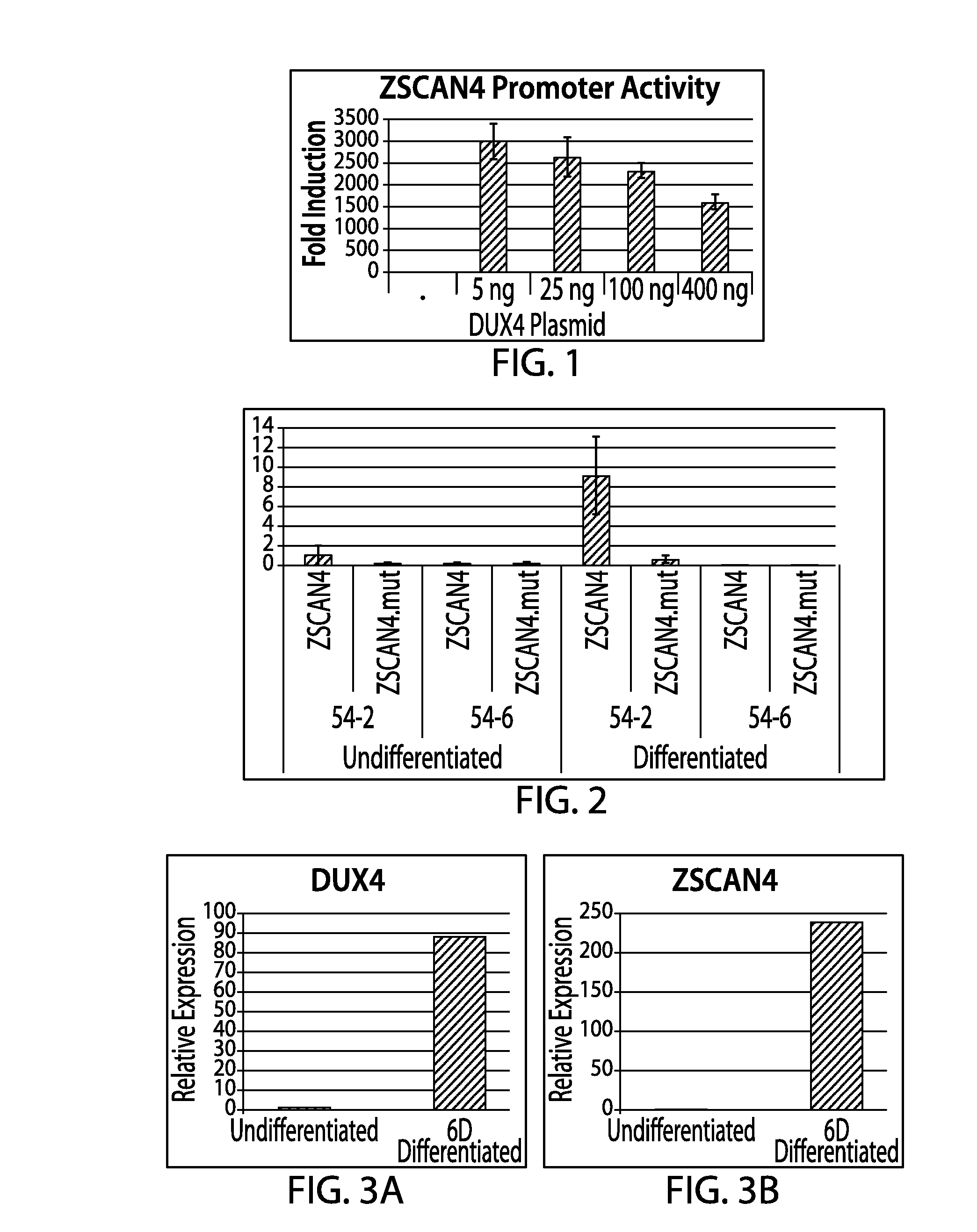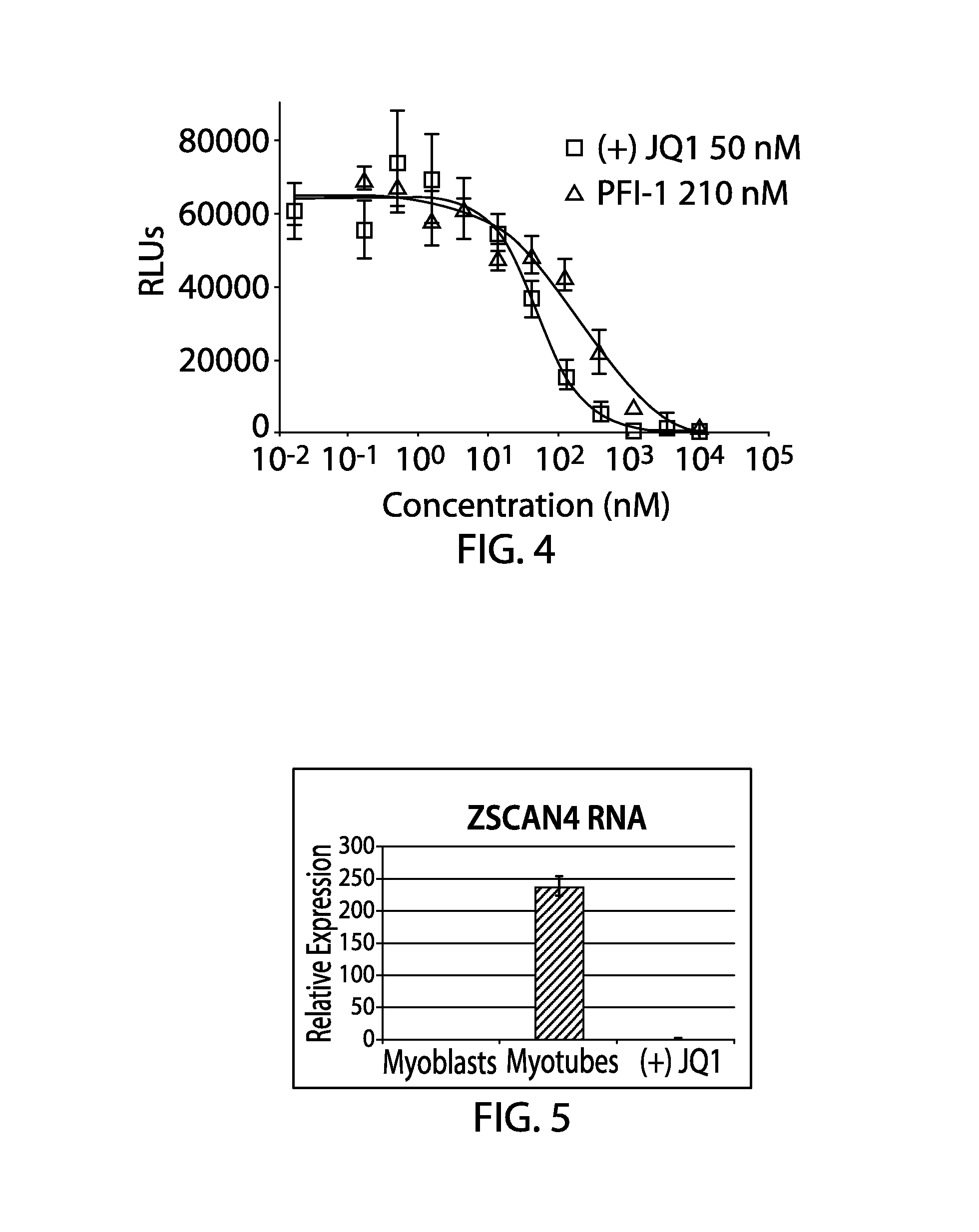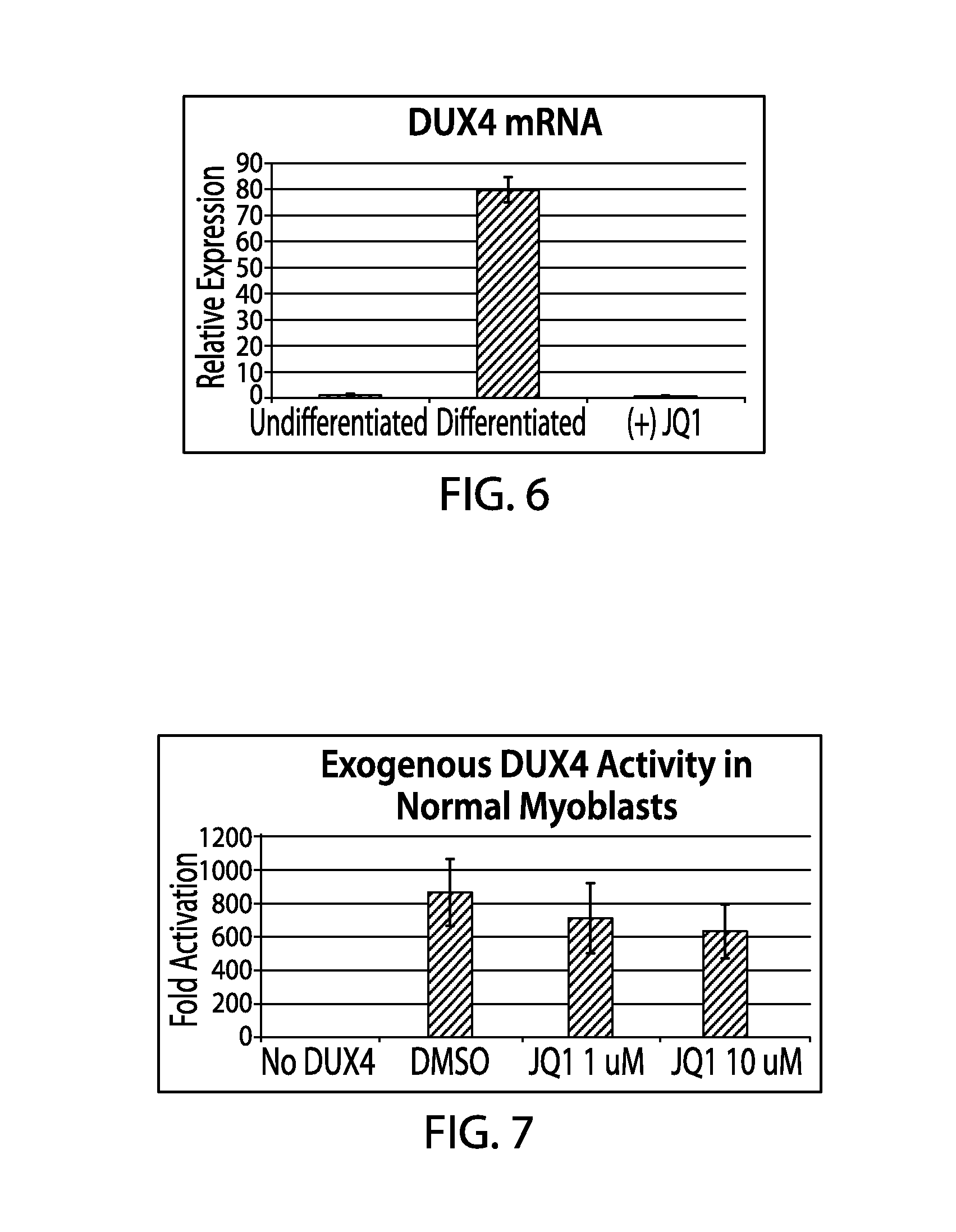Inhibition of DUX4 Expression Using Bromodomain and Extra-Terminal Domain Protein Inhibitors (BETi)
a technology of extra-terminal domain and protein inhibitor, which is applied in the direction of biocide, heterocyclic compound active ingredients, animal husbandry, etc., can solve the problems of wheelchair-bound individuals, muscle no longer serving to correctly support shoulder blades, and difficulty in throwing or raising arms above the head, so as to reduce the severity of fshd symptoms, inhibit dux4 expression, and reduce muscular weakness
- Summary
- Abstract
- Description
- Claims
- Application Information
AI Technical Summary
Benefits of technology
Problems solved by technology
Method used
Image
Examples
Embodiment Construction
)
[0041]Discussed herein is the use of a cell based assay to detect DUX4 expression in FSHD muscle cells. The connection of DUX4 expression to FSHD is used to screen a library of compounds that target epigenetic modifier proteins to locate a potential treatment for FSHD. This “chemical genetics” approach identified the bromodomain and extra terminal (BET) family of proteins as key targets involved in DUX4 expression. Selective inhibitors of BET proteins (BETi), specifically (+)-JQ1, PFI-1, RVX-208 (Resverlogix Corp.), I-BET-762 (GlaxoSmithKline), and I-BET-151 (GlaxoSmithKline) were found to block the induction of DUX4 and its downstream targets ZSCAN4 and TRIM43 during differentiation of FSHD1 and FSHD2 muscle cells in vitro.
[0042]Further, BETi also block DUX4 expression in undifferentiated FSHD myoblasts. While this disclosure will focus on the use of JQ1 and certain other BETi, it should be recognized that specific BETi can be used in a variety of different situations and a large ...
PUM
| Property | Measurement | Unit |
|---|---|---|
| time | aaaaa | aaaaa |
| time | aaaaa | aaaaa |
| time | aaaaa | aaaaa |
Abstract
Description
Claims
Application Information
 Login to View More
Login to View More - R&D
- Intellectual Property
- Life Sciences
- Materials
- Tech Scout
- Unparalleled Data Quality
- Higher Quality Content
- 60% Fewer Hallucinations
Browse by: Latest US Patents, China's latest patents, Technical Efficacy Thesaurus, Application Domain, Technology Topic, Popular Technical Reports.
© 2025 PatSnap. All rights reserved.Legal|Privacy policy|Modern Slavery Act Transparency Statement|Sitemap|About US| Contact US: help@patsnap.com



